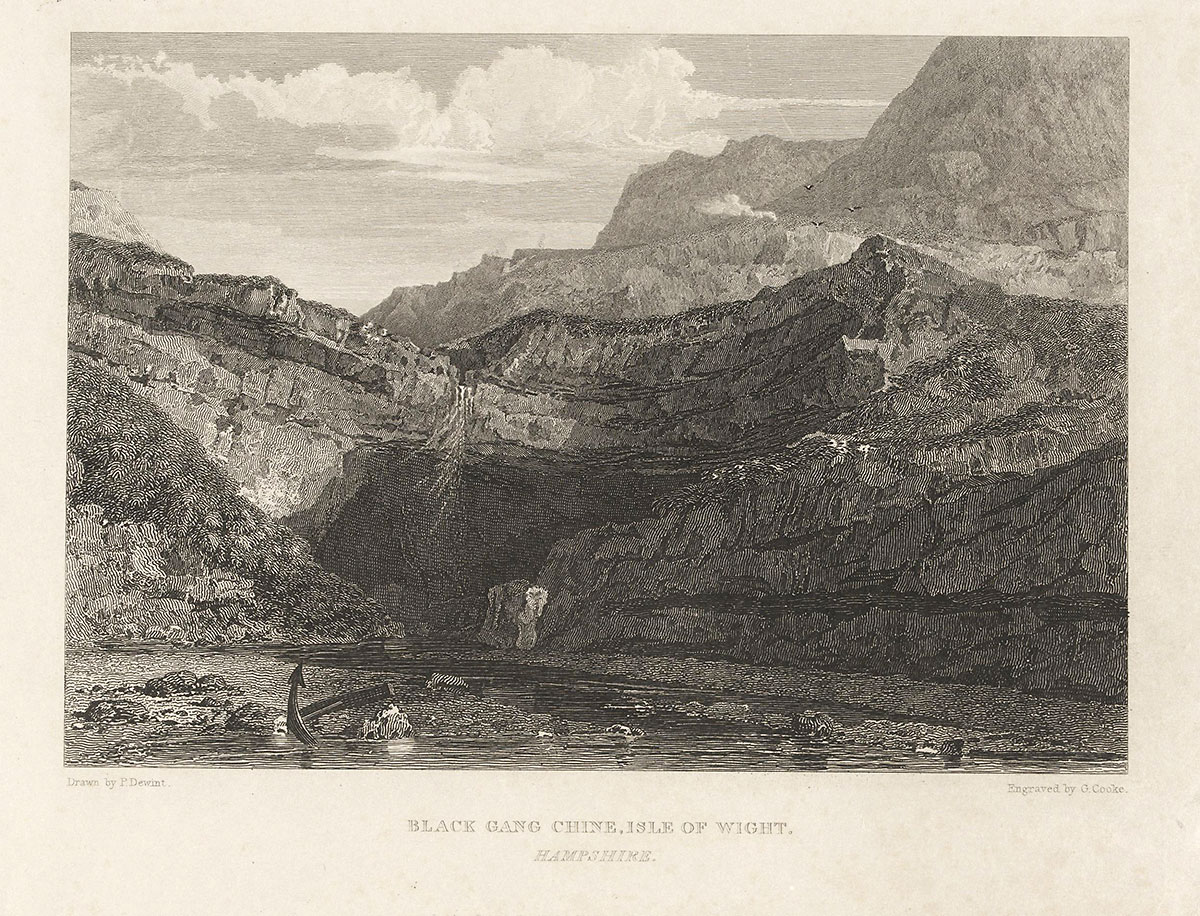 MENU
MENU
 MENU
MENU

"Black Gang Chine, Isle of Wight, Hampshire," engraving by George Cooke, published in 1816. By the time the Hitchcocks visited, it was a popular tourist site for Victorians seeking fresh air and scenic views, and probably also had undergone some erosion. Image courtesy of The Victoria & Albert Museum.
The Hitchcocks’ interest in science, religion, and the arts is evident throughout the trip. On the way to Bristol, they stopped at Bemerton to see the grave of the 17th-century devotional poet George Herbert, and were sorry to find the cathedral at Hereford closed, as they had hoped to see its copy of Wycliffe’s bible. Edward was impressed by the ruins of Tintern Abbey, where Orra imagined the “various apartments of the monks, sitting room, pantry, kitchen, the windows where they received food, etc.” The flowers made her think of home, wishful to send a bouquet of foxgloves to their daughter Jane.
They thought Bristol beautiful and particularly enjoyed the Clifton Observatory, which had started out as a mill and was later converted to an artist’s studio. Edward was incensed by the fee required to get in. “This seems to me a very contemptible affair,” he huffed, but a spectacular panoramic view of the city and Avon Gorge, could be viewed from within a camera obscura and a tunnel led to a cave otherwise accessible only by scaling a cliff.
The Hitchcocks frequently commented on the bridges, tunnels, and modes of transportation as they traveled, so much of it new to them. Their train went through five tunnels between Bristol and Bath, and the next morning they hurried the 70 miles to the Isle of Wight via stagecoach ("travelling on top is very pleasant in good weather"), railroad (first class "not any more comfortable it seems to me than American first class"), and steamboat (finally, a smooth crossing).
The Isle of Wight was a geological delight. They took a boat around Freshwater Bay to see The Needles, three spires from 50 to 100 feet high ("which probably once formed a bridge over to England," noted Edward,) and were impressed by the steep 600-foot chalk cliffs covered with gulls and cormorants and by the colored cliffs at Alum Bay. Edward learned the local word chine, for ravine, and considered Black Gang Chine "some of the most romantic scenery conceivable."
At church, they had a brush with royalty. Queen Victoria, Prince Albert, the Queen Mother, and the royal children were spending their annual month on the Isle and sat not ten feet away. Orra was struck by their simplicity, even plainness, in dress and deportment: “There was almost nothing to distinguish them from their subjects, their dress simple & no pretentious display on entering or leaving.”
On June 10, Orra noticed with some surprise that they had been gone from home a month. She had become more willing to enjoy her travels. “When I turn my thoughts homeward I can but say I know not what is doing there but I feel a confidence in committing them all to God.” They spent only two days on the Isle of Wight, crossing back to the mainland at Portsmouth, a mere 25-minute ride on a steamer.
Listen to what Orra wrote in her travel diary.